The Wild Facts You Never Heard About The Wild West

The Wild West was more than just what we see in old Western movies, or in the show Gunsmoke. For many, it was a way of living off the land at times, and other times fighting for your life. It involved gambling for gold and riches, and dealing with outlaws that wanted to steal money. What’s interesting is that the facts you’ve learned about the Wild West may not be quite true, or they may have been twisted just a smidge…
Take the now-famous Davy Crockett. Serving in the Texas Revolution, he was a well-known pioneer, and is nicknamed “The King of the Frontier” because of it. He was also famous for his storytelling and hunting skills. Pioneering is what people had to do to initially take over new lands, and seize them from the Native Americans.
This job wasn’t an easy feat. Between the violence of fighting with Native Americans over land, and the harsh conditions of the property, pioneering was easier said than done. However, the pioneers who succeeded proved to benefit from the profits they made by conquering new land. But that’s not all…
The Dream

Pioneers had dreams of putting down their own roots, finding their dreamland, and making the life they always hoped for in a beautiful new location. Have you ever heard of Daniel Boone? Daniel Boone is an infamous example of a pioneer who staked his claim in Kentucky. Everyone who knew Boone also knew him to be a skilled explorer and woodsman.
The great Daniel Boone needed to be skilled in these tasks because the harsh climate and learning to live off the land would have been an enormous challenge for him (and other pioneers too). Most people traveled in groups in wagon trains for safety. Could you imagine living during this time? That is just one of many things that was very different back then.
After Little Bighorn

After Sitting Bull’s victory against General Custer at the Battle of Little Bighorn, Sitting Bull joined Buffalo Bill’s Wild West Show in 1881, which was a huge outdoor attraction that recreated many conflicts between European colonies and the Native American Indians. Soon after, the Native American Indian police feared that Sitting Bull was planning on joining the Ghost Dance movement.
This movement was a new option of a belief system that strictly opposed much of the traditional Native American beliefs. As a result, Sitting Bull was killed in 1890 by the Indian police during his arrest at the Standing Rock Reservation. Just like with other revolutionary acts throughout America, this man could not become stronger than the newly established government, which resulted in his untimely death.
The Texas Revolution

The Texas Revolution began when Texas Mexicans (Texians) and the United States rebelled against the Mexican government, primarily because they did not agree with the immigration policies the Mexican government came up with for its citizens. It became increasingly difficult for its citizens to abide by the rules of immigrating to Mexico from the United States.
It all began in October of 1835, and by December, Texians and a small number of United States volunteers defeated a small Mexican army. In the eyes of the Revolution, things looked promising to the Texians. However, the end was nowhere in sight just yet. It would be several months before things in the Wild West were settled between everyone.
Antonio Lopez De Santa Anna
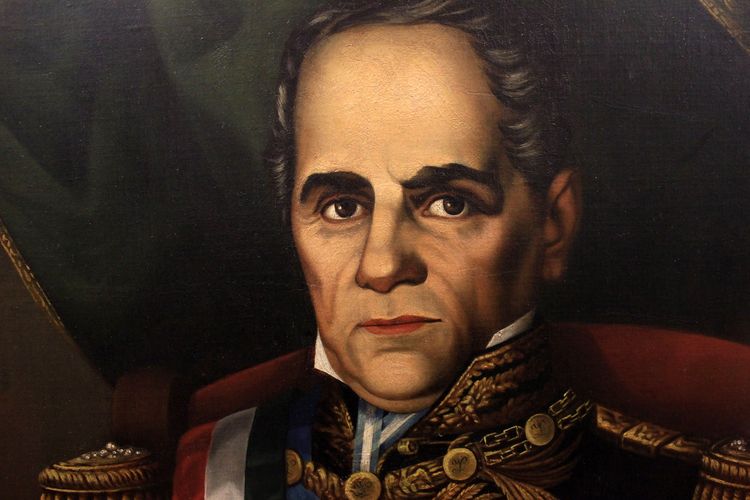
By February of 1836, a man by the name of Antonio Lopez de Santa Anna entered the picture with an army to defend Mexico against the rebels from the United States and the Texians. Being a strong army, it was hard for the Texians to fend them off. Fighting kept going until a treaty was finally signed later that year between Santa Anna and the Republic of Texas.
The infamous treaty of Velasco stated that all Mexican troops would be withdrawn away from the Texians, and no more violence would be had. Even though it rolled into the New Year, this news was wonderful for the Texians. They were able to keep their sacred land and not worry about others trying to conquer it (just yet, at least).
The Treaty Of Velasco
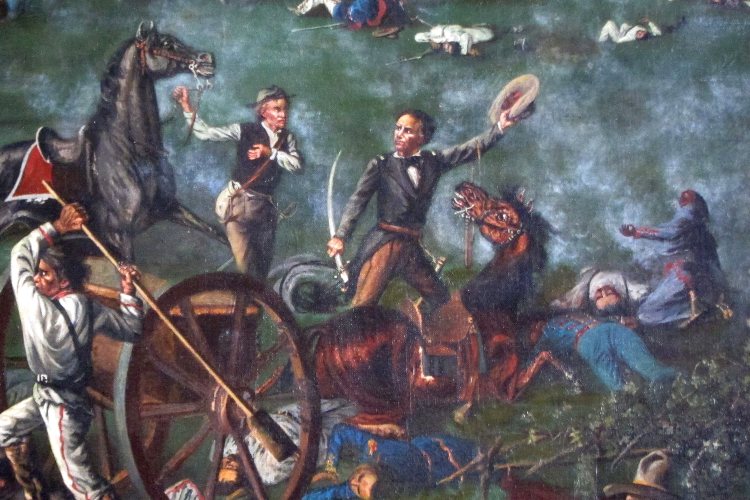
After the rebellion of the Texians and the United States against Mexico and both sides needing an end to the violence, the treaty of Velasco was signed. The uprising went on for almost a year at this point. One of the main points was the promise of Mexican troops being brought back from below the Rio Grande peacefully away from Texas.
Santa Anna also promised that all of the confiscated land taken by the Mexicans would be given back. Both sides gave back the prisoners taken during the Revolution, and the Texas Revolution came to an end. That was quite a peaceful situation, given that it started so badly. Luckily, the violence ended, and more lives were not lost as a result.
Manifest Destiny
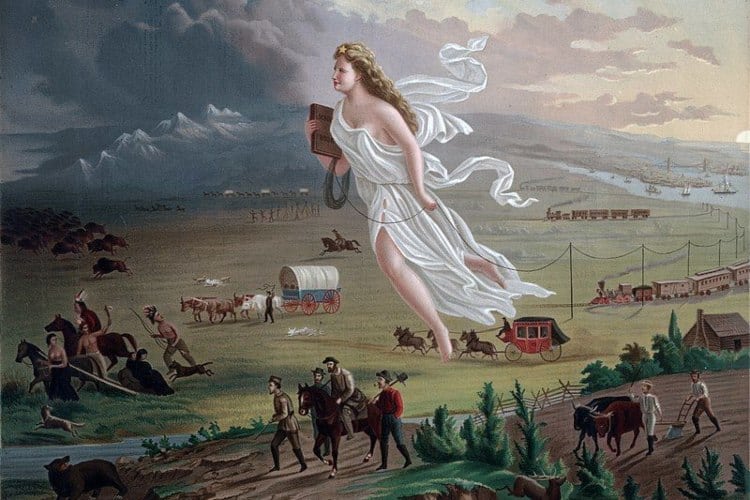
Supported by the belief that it was destiny, it was decided that it was time for the United States to expand its colonies westward in 1845. This would grow America from the Atlantic Coast to the Pacific Coast. Manifest destiny is “the fulfillment of our manifest destiny…to overspread the continent allotted by Providence for the free development of our yearly multiplying millions,” according to the Democratic Review.
Basically, America believed that God, or a higher power, destined the country to expand westward from the Atlantic to the Pacific Coast. It seems as though people always use a deity for their epic voyages and unnecessary actions, even if they are barbaric. The irony of using religion to conquer people is still fitting to this day. Nevertheless, it is one of the reasons for the infamous Wild West travels.
President Polk And The Mexico American War

When going west after Oregon was settled, President Polk wanted more but wasn’t quite sure how Mexico was going to react when he tried to take California. When he attempted to take it, Mexico inevitably got fired up, and it caused the Mexico American War. When it was over, a treaty was signed (the Treaty of Guadalupe Hidalgo), and America was granted around 525,000 miles of land.
This land would later become modern-day Arizona, Colorado, New Mexico, Nevada, Utah, and Wyoming. Polk was the 11th president of USA from 1845 until 1849. He was previously a governor of Tennessee before he made his way to become the Speaker of the House and eventually the president. Polk was a protege of the notorious president before him, Andrew Jackson.
Why Go West?

The reason the American government wanted to take its country’s limits and expand them west was to “bring democracy and capitalism to the rest of the continent.” In the 1840s, some guidebooks featured the route west and highlighted fur traders and expeditions that were west, promising fertile land beyond the Rocky Mountains.
This made many people want to move west, manifest destiny or not. It’s one thing to be told that it is your destiny to do something, but it’s another thing to hear real accounts of people prospering in the new land west from where they were. People were looking for a different way of life, and traveling to the west was the change that many longed for in their boring lives.
Gold Rush

Surely you have heard of this infamous event in the Wild West, right? The Californian Gold Rush is infamous in bringing many people west to try to strike it rich by finding gold in California. This happened soon after the war with Mexico in 1846. Gold was discovered in northern California, which made a worldwide frenzy happen, and everyone was convinced they would find riches if they went.
These people are known as “Forty-Niners,” and they sailed around South America to reach California, or they took the California Trail. Over 250,000 miners found over $200 million worth of gold within five years of the gold rush. Yes, that is a lot of money, especially for that time. The successful rush also coined the same name for California’s NFL team, the 49ers.
Gold Mine Culture

During the California Gold Rush, the goldfields were extremely primitive compared to home, and the diet of the miners consisted mostly of pork, beans, and whiskey. Although the conditions out in the goldfield and the average life of a gold miner were less than luxurious, the economy was drastically different. With gold came gold specialists, lawyers, doctors, saloon keepers, and gamblers.
Although many people did not directly see the result of the $200 million worth of gold they were bringing in from the mines, the economy and overall culture for the general population did. In turn, the Wild West continued to grow, develop, and prosper. That meant more and more people would continue to travel out west during this time and for years to come.
Not The First Gold Rush

This big gold rush that brought thousands of people together to try to strike it rich was not the first time this happened in California history. It turns out that this same fiasco happened in 1799 in North Carolina, when Conrad Reed was using a yellow brick as a doorstop. Years later, come to find out, this was actually a 17-pound gold nugget.
And this wasn’t the only time. Another time this happened before the famous California Gold Rush was in 1828, when gold was found in Georgia. Both of these events caused many people to go crazy in these areas to attempt to strike gold. Can you imagine the thrill of going from rags to riches in a matter of minutes all thanks to panning for some shiny stuff?
Not Just Horses

Follow
When thinking about the Wild West, it is easy to imagine a cowboy on the back of a horse, but what few know is that some people actually rode camels in the Wild West. Yes, camels; after all, much of the midwest and west coast is a desert. They were so useful compared to horses because of their adaptation to desert conditions and their ability to preserve their own water.
In 1855, the secretary of war, Jefferson Davis, and Congress gave $30,000 to “the purchase and importation of camels and dromedaries to be employed for military purposes.” The camels were thought to be the key to the country’s expansion westward. It only makes sense to use these strong desert animals out west. And surprisingly, it is all thanks to Jefferson Davis for the contribution.
Pre-Transcontinental Railroad

Before the Transcontinental Railroad, which was used to carry goods to places all over the country, many products and supplies had to be taken where they needed to go using other resources. How do you think this magical feat happened? Around 1855, it was by camelback. Jefferson Davis believed that camels would be ideal for carrying supplies between military outposts.
By 1875, the United States Army had purchased and imported around 75 camels from the Mediterranean and the Middle East. Although it was a good idea from Davis, its application proved to be…not so great. All of the camels were sold at auction within a decade, which is too bad. People could still be riding camels to this day if things had gone a little differently back then.
Pony Express

The Pony Express was the way mail was delivered all over the continent. Not only did they deliver mail, but they also delivered newspapers and messages. They would do this by using relays of horses, and the system was used between the dates of April 3, 1860 and October of 1861. Before this, it would take forever to receive mail, but this system reduced the time to ten days.
It was the primary way of transporting mail between Missouri and California. Many people have heard of the Pony Express, and its romanticized reputation is not far from the truth. It was better than camels and actual ponies, too. This epic system was the start of many things to come for the Wild West, which just made it that much more accessible for more people to travel that route.
Who Worked The Pony Express?

At its peak, the Pony Express employed over 6,000 men and owned thousands of wagons and warehouses. That would have been one of the primary companies to work for in the Wild West! Initially, the Pony Express had three founders in the late 1850s: William Russell, Alexander Majors, and William B. Waddell. This unit of communication operated year-round and was ideal for its time until the telegraph came around.
A lot of the idea of the Wild West comes from the Pony Express because of the use of horses. More than likely, the idea that everyone in the Wild West rode fast horses around everywhere and that everyone rode horse-drawn carriages came from the Pony Express. Eventually, this transportation would be replaced with more advanced ideas in future decades.
Horseshoes
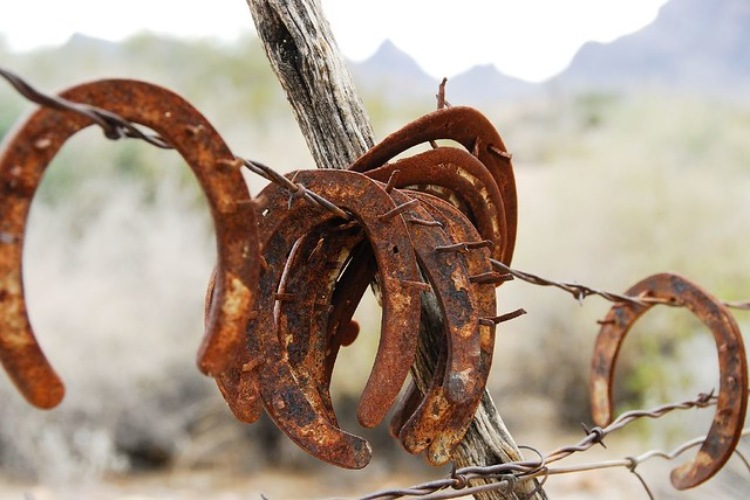
Horseshoes have a reputation for having superstitious qualities. Would you agree? In the Wild West is where this comes from. Horseshoes are said to bring luck to whoever nails them in a “u” shape above their door. The luck they bring will also drive away evil spirits, and if you hang them in an upside-down “u” shape, the luck leaves the room.
They were also seen nailed to the masts of ships. Eventually, blacksmiths were thought to have a lucky job since they were where horseshoes came from. The horseshoe is a lucky symbol and is also most known for people throwing it around a peg in a game called “horseshoe.” However, the horse would probably differ in thinking that the ‘shoes’ were anything but lucky.
Thieves

The hope of moving west was a hope for riches. Some people did profit a great deal from moving west, and with that came thieves. One outlaw still talked about today was Jesse James, who was a renowned fugitive. He was helped out by his older brother, Frank. Together they were close to unstoppable in their careers in bushwhacking, or stealing land and forming gangs.
Their gang was called The James, which consisted of Jesse, Frank, and their younger brothers (Cole, Jim, John, and Bob). Anything of value was not safe around them. They would rob banks, stagecoaches, and trains. Is it better or worse that they attacked and robbed people as a family? What’s that famous saying about the family that steals together?
America’s Most Wanted

Many people were terrified of The James, specifically Jesse and Frank, because they were so good at stealing from people and were not kind about it either. They took from banks, trains, and stagecoaches for ten years after the Civil War. It wasn’t until Jesse was killed by one of his very own gang members, Robert Ford, in 1882 that the reign of Jesse James was over.
This culture has made the outlaw look and “Most Wanted” aesthetic a staple for the Wild West, and it was all thanks to famous outlaws like Jesse James and his gang The James. The concept has lived on and is even featured in pop culture, like Disney’s film Tangled. The main male character, Flynn Rider, is a thief and has a poster made with his face and a reward for his capture.
When Money Is Tight

When money seemed too tight and she and her husband ran out of other options because mining wasn’t giving them what they needed, Pearl Hart and her husband Joe Boot took up robbery. Woman criminals were extremely rare, and at the time, Pearl Hart was the second woman to survive robbing a stagecoach, under a plan that she made herself.
In her plan, she dressed as a man and deceived the driver and stole $431 along with their guns, which was a ton of money during that time. When she left, the driver went into town and told the authorities, who found Pearl and arrested her. Apparently her male-like costume was not quite good enough to keep her identity a secret.
The Gunfight

Gunfights were made infamous in the Wild West, where if two people quarreled, they would go outside and settle it by shooting at each other. The fight might have been over something small and petty. The most famous of these in history is the one between Virgil Earp, special policemen Morgan and Wyatt Earp, and the temporary lawman Doc Holliday.
Surely you have heard of these names before, right? If not, you are able to learn the amazing truth about the most famous gunfight in the Wild West. The shootout was on October 26, 1881 and lasted only 30 seconds in Tombstone, Arizona. It took place at the intersection of Third Street and Fremont. Three lawmen were injured, and three cowboys were killed.
Mirror Images

The cameras that were used to take pictures in the Wild West were very primitive compared to what we have today. They were huge and bulky, took forever to use, and when they produced a print, it was a mirror image. There is a picture of the legendary Billy the Kid, and it seems as if he is left-handed because he is holding his gun in what looks to be his left hand.
However, because the cameras would take pictures reflected, he wasn’t left-handed; he was actually holding the gun in his right hand the whole time. And yes, people spent countless hours obsessing over him to discover his secrets. He is a historical figure despite his criminal past. Too bad there wasn’t more evidence about his actual life so people wouldn’t have had to speculate so much.
Billy The Kid

If the tintype camera wasn’t enough proof that the infamous outlaw Billy the Kid wasn’t left-handed, the Winchester rifle offered up the other evidence. In the Wild West, a gun that was used commonly was the Winchester rifle. Billy the Kid, whose real name is William Bonney, was holding a Winchester rifle. This weapon has a loading gate located on the left side.
To properly use this weapon, Billy could have had to use his left hand, making him left-handed. However, at the time, Winchester only made 1873s with a right loading gate, which means Billy was, in fact, right-handed. Or he was ambidextrous, where he could shoot with both his right and left hands. Some people can write with both or play sports that way.
Pictures Or It Didn’t Happen
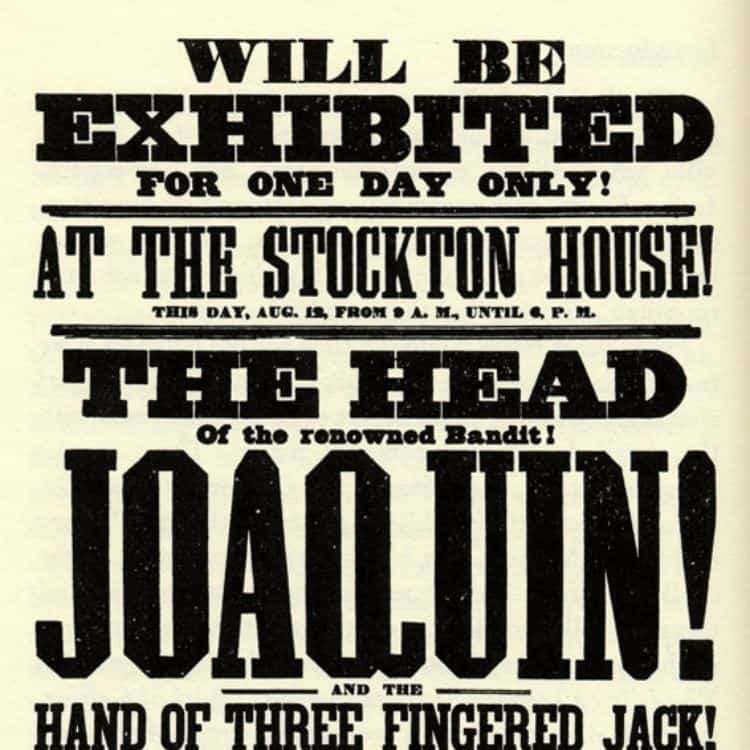
When there was a reward posted for an outlaw to either be brought to town dead or alive, there were some issues with proof. If someone killed an outlaw, how would the jail know it was real or if it was someone lying to get the money? When an outlaw was murdered but was feared by the general public for so long, how was it proved to the people that the outlaw was no longer a threat?
Pictures, of course. People would take photos of a dead outlaw to collect the reward or to prove that the outlaw was no longer a threat. It was like a bounty system, but it would take time for the picture to be taken, processed, and circulated around the entire town. People probably lived in fear of a particular criminal much longer than they had to.
Black Cowboys

Despite the ideas fed to you through movies, where all the cowboys that are shown are white, many black cowboys are rarely mentioned in history books or films and helped settle much of the Wild West. But of course, they existed during the Wild West expansion. They would do everything that white cowboys would do: handle cattle, tame horses, and work on ranches.
When slaves were freed, many of them traveled west to find riches, and in terms of pay, there is little evidence to show racism in how much black cowboys were paid in comparison to white cowboys. It is safe to assume they were not treated as equal to the white cowboys and dealt with many hardships for years to come.
Cowboys Look Cool

When thinking about how cowboys dressed, they always seem to look so cool, but what we seem to forget sometimes is that everything they wore had functionality. Their clothes had to withstand a lot of wear and tear when it came to wrestling cattle, riding horses, and protect them from the elements. Cowboy lovers probably like that style and hardworking go hand in hand.
The bandana is a trademark of any cowboy, and this is because they were worn by all cowboys to protect them against the dust and dirt kicked up by cattle. It also safeguarded their necks against the sun. They could use it to wipe any sweat from their brows, too. This seemingly useless piece of cloth has, in fact, many purposes.
Bandana, Chaps, And Hat
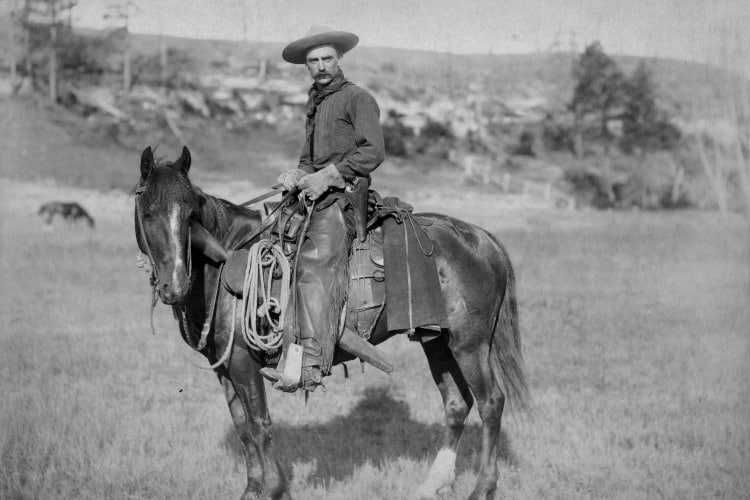
Bandanas were worn and loved by all cowboys, and they helped them in many ways. They were used as sunscreen and as a dust protector. What’s interesting is that they were not just made from cotton; some cowboys also had them made from linen and silk, and most bandanas were red. Chaps, pronounced “Shaps” with a ‘sh’ sound, were kind of like leggings.
They were made out of leather or suede and had the purpose of protecting the cowboys’ legs against horses. Nobody wants their skin rubbing against fur for several hours at a time. And who can forget the cowboy hat? It had the sole purpose of protecting their heads and eyes from the sun, which makes perfect sense, since they worked outdoors all of the time.
How To Talk Like a Cowboy
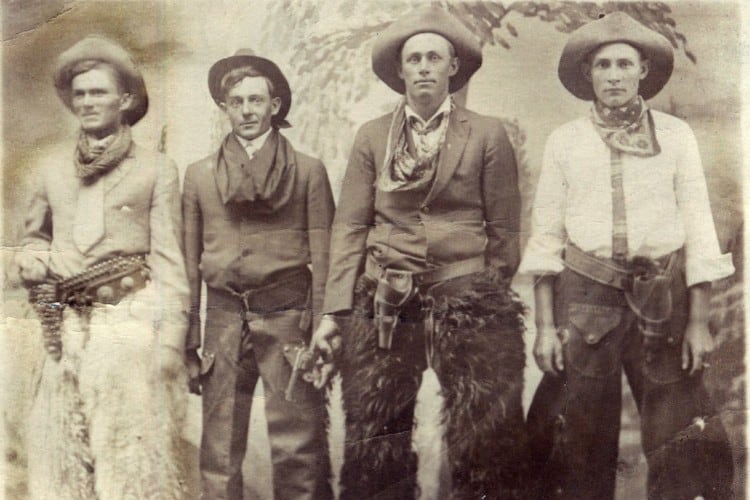
When we think about the Wild West, we probably start thinking about the weird things they would say, but in some places, the lingo they used we still use today. “Bellyaching” means to complain. “Caterwauling” also refers to complaining or to terrible singing. A “fandango” is from a Spanish word and means a big party with lots and lots of dancing.
If you have a desire for something, it’s called a “hankering.” If something “doesn’t amount to a hill of beans,” it isn’t worth anything. Being angry is to be “hoppin’ mad.” Some of this slang has passed on for generations: so much that you could probably figure out some of the cowboy lingo on your own using the context clues.
Saloons

Today we have so many places to go to hang out with friends, like a local coffee shop, your favorite brewery or bar, or the movie theatre. Back in the Wild West, the place to be was the saloon. Almost everyone in town would gather in the saloon to drink, eat, or play cards with each other. The idealized saloon from the movies isn’t exactly accurate, in any case.
The original saloons were little more than a tent, and their offerings were pretty much burnt sugar, tobacco, and alcohol. Firewater was also common, which was a common word for whiskey. Despite the lower-class status of how some of the drinks sound, it was definitely top shelf at the time. It was the only shelf, so people loved it for better or worse.
Alcohol

Along with their questionable beer and firewater, cactus wine was also a popular drink and was made from a mix of tequila and peyote tea. The reason they called whiskey firewater was because early traders would throw whiskey on fire to prove to the Indians that it had high alcohol content. Mixing alcohol and card games was always dangerous, however.
Deadly gunfights could break out at any moment, and it made the fights even more dangerous because the gunfighters would be intoxicated. On the best days, saloons proved to be the best place for a drink and a show. People were probably killed by stray bullets all of the time. They were perhaps nervous of them ricocheting and hitting the wrong person.
Saloon Girls

Often thought of as prostitutes but far from it, saloon girls were nothing short of a necessity for many men when visiting local saloons. The reason being that in the Wild West, men outnumbered women 3-1, and in California, it was 9-1. Eventually, women were hired to hang out in the saloons, sometimes dance with men, and keep them company while they played cards.
However, their bodies were not for sale. Although not prostitutes, the life of a saloon girl proved to be dangerous at times, so it was not uncommon for these women to carry a knife or pistol with them. They might be compared to dancers of the modern time, who equally live a not-so-safe lifestyle sometimes because of their chosen profession.
The Queen Of Cards

Card shark Alice Ivers was born in England and moved to America. Her card handling skills became quite the talk of the Wild West, and she became famous. When she moved to America in 1865, she was just a girl and went to a girls’ boarding school. She moved to Leadville, Colorado and practiced her poker skills until she was the best around.
She earned the nickname “Poker Alice,” and where she learned her skills is unknown. The last thing men would hear before she won big was, “Praise the Lord and place your bets, and I’ll take your money with no regrets!” which sounds like the perfect phrase to say to anyone playing cards, especially for a woman to say to all the guys during the Wild West era.
Deacon Jim

There are certainly many bad guys (and gals) from the Wild West era. Another criminal in the Wild West was James “Killer” Miller, who was a paid assassin and gunslinger. He was known to have killed at least 14 people, but according to legend, the number could have been as high as 50, but because of lack of documentation back then, there is no way to know.
He was also nicknamed “Deacon Jim” because he didn’t smoke or drink and frequently went to church. Despite this goody-two-shoes behavior, he had a bad habit of killing people. Maybe he should have spent more time in church or something, because Deacon Jim was eventually killed by a lynch mob in Oklahoma. They hanged him in a barn after being put in jail.
Getting Outta Dodge

“Gunsmoke,” a popular Western TV show, made the phrase “getting outta Dodge” famous, but it’s probably not what you think. Dodge is a city in Kansas and was the home and hang-out of many gunslingers. In the 1870s, people would be in need of active fighters to hire as protectors of businesses, and the place to look for the best of the best was Dodge, Kansas.
This historical town to this day celebrates this reputation with gunfight reenactments, tours of historic buildings, and a recreated street to look just like it did back in the 1870s. One of the historic buildings is the old jail, and if that isn’t enough history for you, there’s also a wax museum. Tourists from all over the country enjoy visiting the area.
Broncho Billy
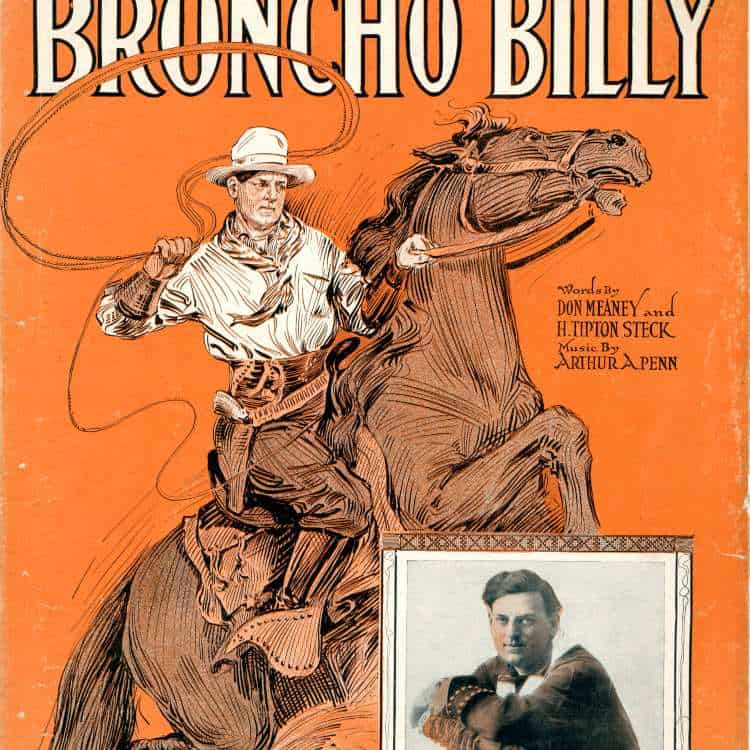
Broncho Billy Anderson is known worldwide to be the first Western film cowboy. He starred in hundreds of films and made a career out of the persona of being a real cowboy. It turns out that he was not a real cowboy in real life at all. He was born Maxwell Henry Aronson and was the son of a salesman.
After starring in the film “The Great Train Robbery,” the persona of Broncho Billy Anderson was born. When he was old enough, he moved from Arizona to New York City, where he became the world’s first western film icon. He was married to the same woman for over 60 years, and they had one child together. He passed away in 1971 in California.
Fort Griffith, Texas

Fort Griffith, Texas put the “wild” in the Wild West. It is renowned as the Wild West’s roughest town because of where the city is located. It is located in between the West Fork of the Trinity River and the Clear Fork of the Brazos River in the north part of Texas. Originally built to protect the ranchers and the farmers who were settled below, this town became a hub for outlaws and cowboys.
Around the 1870s, common law was scarce, and it made this town a rough place to be. A few years prior in July of 1867, the US cavalry fort was established there and used during the Civil War. Now it is considered a national historic site, with many visitors every single year who enjoy learning about things that happened during the time of the war. However, it was an infamous place well before that.
Women In The Wild West

Because of the film industry, it is hard to imagine anyone but men doing the jobs of cowboys and other duties at the time, and women are usually portrayed as prostitutes. This way of thinking is not the case, however. During this time, women in the Wild West took up some jobs such as doctors, and some even owned businesses.
Other women were busy raising families, and others like Pearl Hart were outlaws. Mary Fields spent her early life enslaved, but after the 13th Amendment was passed, she worked as a mail carrier. She was the first black woman postal worker in history. Although women were able to hold decent jobs in some areas, their rights were still lacking compared to a man’s for many years.
